Last-Minute NYC Holiday Gift Guide 🎁
We’ve created a holiday gift guide with presents for the intrepid New Yorker that should arrive just in time—


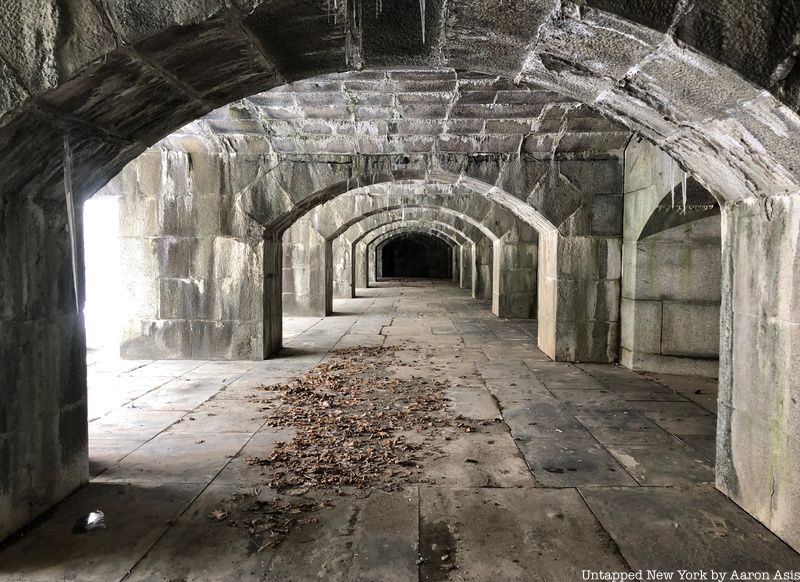
As the largest borough in New York City by more than 30 square miles, Queens offers a long list of abandoned structures within a borough oscillating between industry and residency. While the development of areas such as Long Island City has prompted the city to demolish abandoned gems such as 5 Pointz, there are still plenty of places left to explore for those interested in venturing into historical buildings, rusting railways, and forgotten forts. Here are 10 abandoned places to discover in Queens.

Constructed for the 1964 New York World’s Fair, the New York State Pavilion was the single largest plaza at the event. It housed everything from open-air concerts to scenic views of New York, New Jersey, and Connecticut. The pavilion was, for a brief period, the talk of the town. Eventually, however, the fair ended and the public’s excitement for the building faded. It soon fell into disrepair. Despite the vendors’ signed contract to tear down all buildings within 90 days of the fair’s closing, the monolith remained because it was simply “too expensive to demolish”.
Although various attempts at repairing the structure have been made, including a new “American Cheese Yellow” paint job, none have really stuck and the building has remained faded and deteriorating. That doesn’t mean that it hasn’t had a life after the fair. You may remember the pavilion being a plot point in the first Men in Black movie, the location of Tony Stark’s “Stark Expo” in Iron Man 2, or from any number of films, music videos, and television shows.
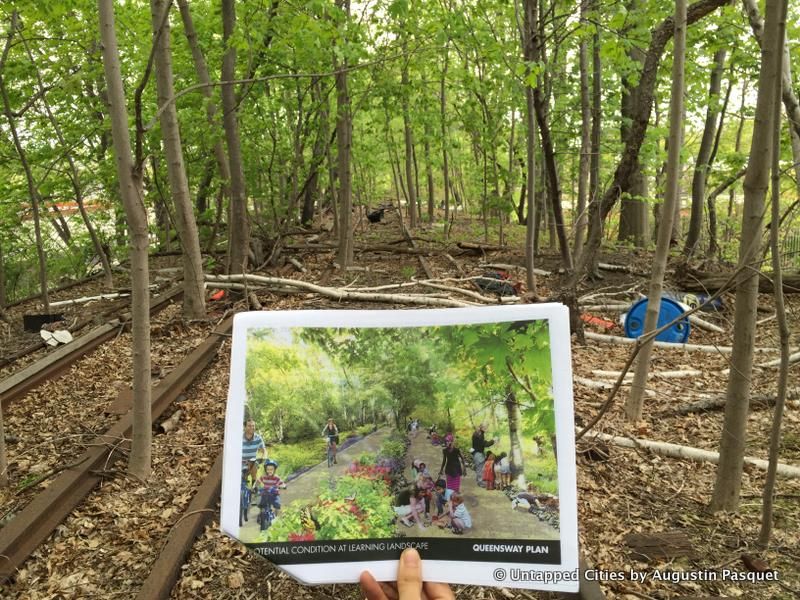
In 1877, the Long Island Rail Road opened a train line to the scenic Rockaway Beach. The line was successful for nearly a hundred years until the company that owned it went bankrupt in 1962. From that day on the rail line was left completely abandoned. Nature soon took over the structure and covered it with a layer of thick vines and weeds, making it a relic of its former self and obscuring the tracks from New Yorkers’ thoughts and sight.
In 2011, a group of activists developed a plan for the old rail line. Seeing the success of the High Line they decided to embrace the nature that had taken over the tracks and make it into the QueensWay, a park for joggers, bikers, and tourists. However, that particular initiative has stalled and for now, it remains one of New York City’s abandoned places. Another competing group, the Queenslink has since been formed, seeking to reactivate it as a rail link (It should be noted that there have been several initiatives to study reactivation of the Rockaway Beach Branch by the MTA and the Port Authority, but none so far have come to fruition. Perhaps that may change with renewed interest in transit line reactivations like the BQX, now the Interborough Express.
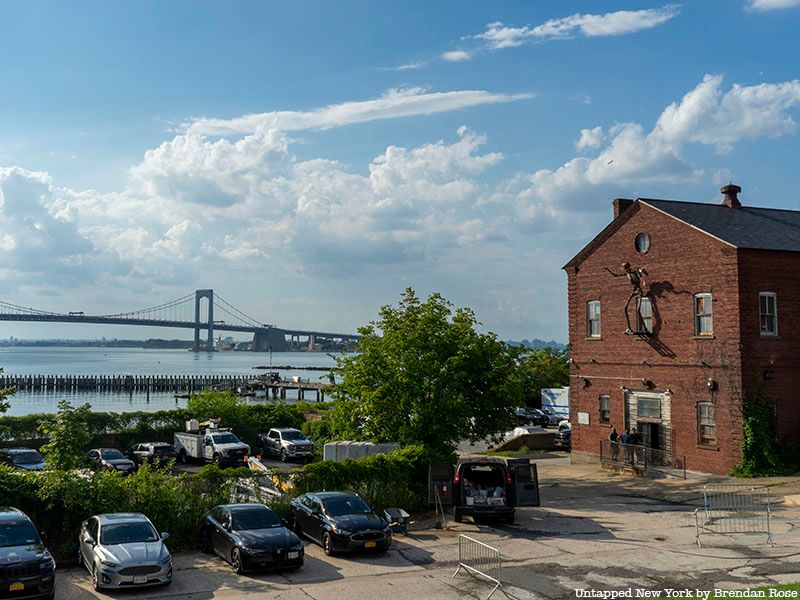
Fort Totten’s history stretches all the way back to the formation of the United States. Originally inhabited by Matinecock Indians, the area was eventually settled by colonizers who dubbed the area Willet’s Point during the American Revolution. In 1864, the area was renamed for General Joseph Totten and fortifications began to make it a Civil War stronghold that would protect New York against the southern military. However, with the South’s increasing military ability, the fort soon became obsolete and was transformed into a makeshift military hospital. After the war, the military used the fort for a variety of different purposes until eventually abandoning it in 1974.
In 1987, the fort and the 10 acres surrounding it were gifted to the New York Parks Department. Much of the area is used as a public space, featuring pools, sports complexes, and baseball fields, however, the NYPD and FDNY use the fort for training centers and it remains the base of operations for the Bayside Historical Society. Despite all the modern activity many of the old Civil War buildings still remain abandoned places and are just waiting for an eager explorer to check them out.
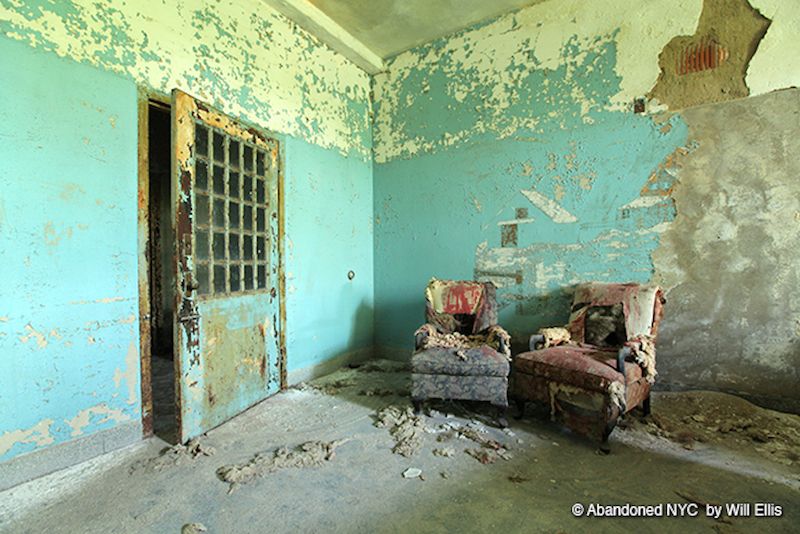
Although parts of the Creedmoor Psychiatric Center remain operational, a relic of its occasionally nasty past exists in an abandoned state. The relic, Building 25, was once a center for the mentally ill, a part of the Brooklyn State Hospital, and one of the hundreds of Farm Colonies that were meant to house and rehabilitate patients. Rehabilitation was hardly what occurred, however. There are stories of abuse and neglect surrounding Building 25 and, in 1984, a patient was struck in the throat by a staff member and died, leading to the shutdown of the facility.
The building now lies vacant, a crumbling reminder of the facility that it used to house. The floors are still covered in toys; the walls and the murals that cover them are peeling away. Perhaps strangest of all, however, is the pigeon infestation that has led Creedmoor to have one of the largest guano accumulations in the United States.
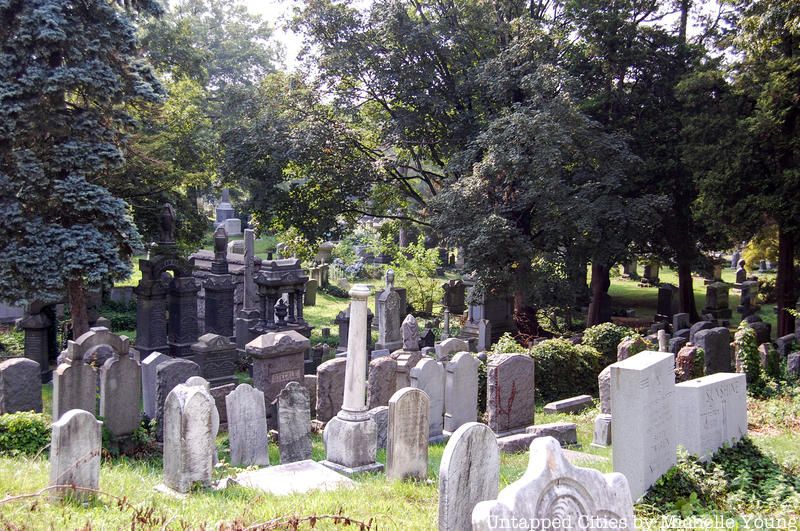
Deep in Ozone Park lies one of the largest burial grounds in New York, Bayside Cemetery. Covering 12 acres and housing over 35,000 burials, this Jewish cemetery dates back to 1865. Used primarily as a burial place for cholera victims, Bayside has often found itself in disrepair, some even report claiming exposed human remains used to peak out of unmaintained graves. Still active today, the grounds have been restored and serve as the final resting place for Civil War vets and passengers of the Titanic. Perhaps what the belt is best known for is the grave of Harry Houdini.
About 15 minutes away lies the Machpelah Cemetery. Abandoned in the late 1980s, the area has become a decrepit shell of its former self. Graves have succumbed to vandalism and the nearby offices have long since deteriorated. The only grave that remains pristine is that of Houdini. Some say there is a secret compartment somewhere in Houdinis tomb that when opened will reveal dark secrets, others say his spirit still haunts the area. Regardless of the truth, many Halloween nights, on the anniversary of the man’s death, mourners can be seen performing seances in hopes of speaking to his wandering soul.
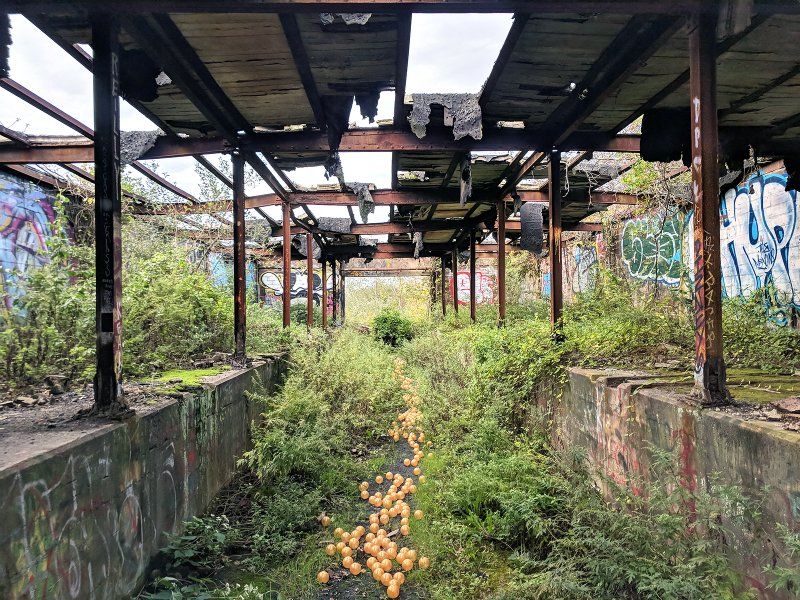
Built in 1917, Fort Tilden has a history in a slew of America’s greatest wars. It served as a munition house during World War I, a force for defense in World War II, and even as a storage facility for nuclear weapons during the Cold War. Now, however, the fort has been left to nature, which has quickly taken it over.
Officially gifted to the National Park Service in the 1970s, the fort now remains a shell of its former self. Thick layers of green cover almost every inch of the base, but this is not necessarily a bad thing. The silos and amphitheaters have been used for art installations, performances, and even a Hurricane Sandy benefit. This place that was once a piece of war is now a part of nature and one of the city’s most popular abandoned places.
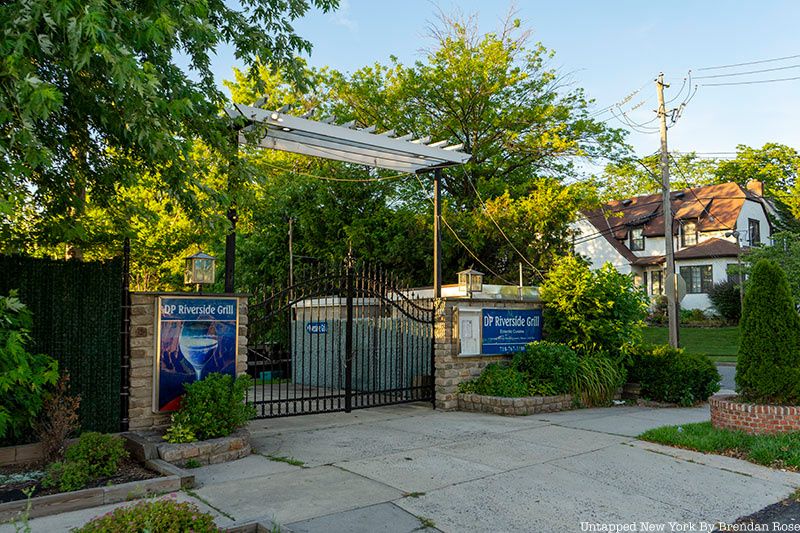
The LIRR Whitestone Branch connected Willets Point to Whitestone, crossing the Flushing River and running along Flushing Bay. It was originally conceived as part of the Flushing and North Side Railroad, later becoming a subsidiary of the Long Island City and Flushing Railroad. The branch opened in 1869 and was electrified in 1912, though service declined in the 1920s. The line was abandoned in 1932 after attempts to consolidate it with the subway system.
Parts of the branch remained after the branch’s decline, including a small section leading to Corona Yard that was kept into the 1970s and a portion east of the Mets-Willets Point station that remains today. A spur of the branch near the Flushing River was abandoned after going underwater in 1983. Though no tracks remain, there is a gate to the former Beechhurst Yacht Club that corresponds to the former northern terminus of the branch.
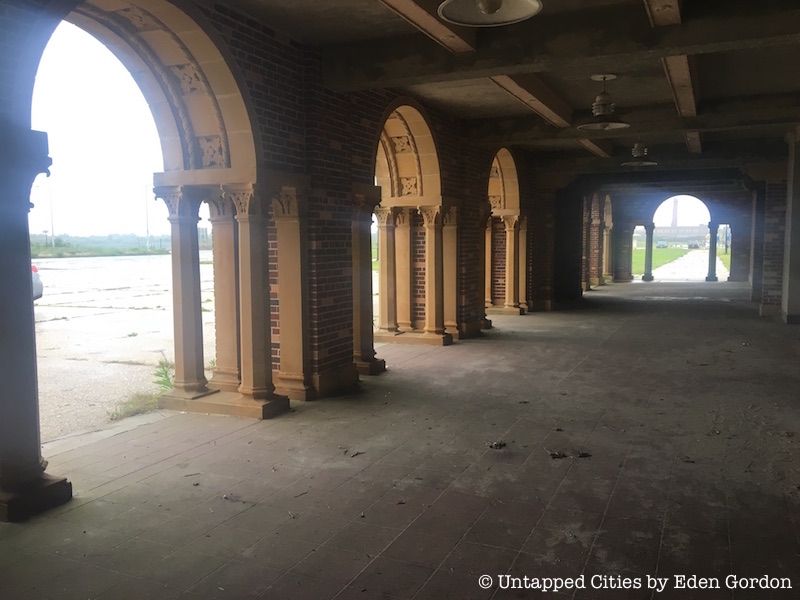
In Jacob Riis Park there lies a massive, abandoned Art Deco bathhouse. The building’s spectacular ornate arches were first built in 1932 containing four smaller buildings. The bathhouse was once a major source of entertainment for the people of Queens. Once it closed, however, it fell into disrepair and all attempts to rejuvenate the old building have failed.
Since the 1990s, there have been incredible pushes to make the bathhouse the hub it used to be. The people of Queens envisioned a sprawling art deco utopia with cafes and shops. There has even been a $20 million asbestos removal effort and yet the building still remains closed and unoccupied. The final blow may have come during Hurricane Irene when sand and wind battered the building and sent into even further down the path of destruction. Nevertheless, there is still something beautiful about the structure, haunting, but beautiful.
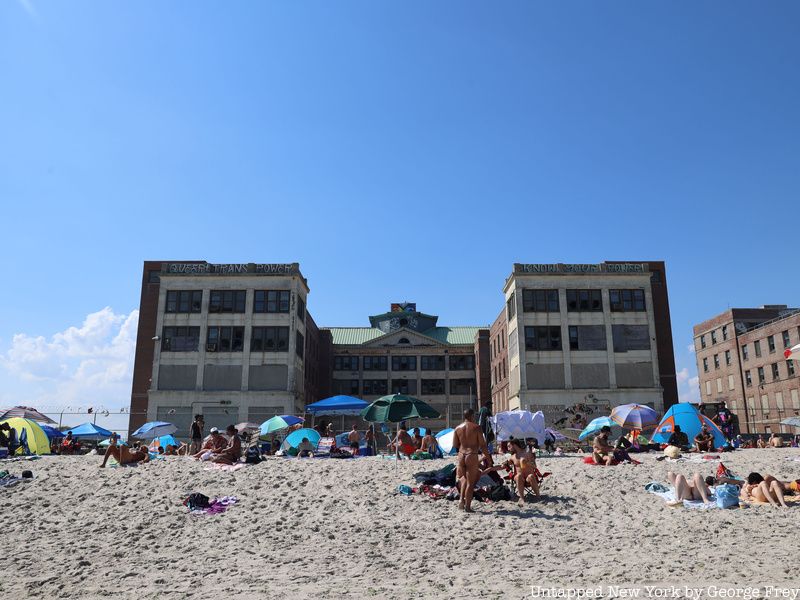
Looming over the beach in Rockaway, Queens adjacent to Jacob Riis Park is the abandoned Neponsit Beach Hospital also known as the Neponsit Children’s Hospital. The hospital once served as a tuberculosis sanatorium and operated from 1915 to 1955. The main building was designed by the notable architectural firm McKim, Mead, and White. Neponsit Beach Hospital mostly operated on children, but by World War II, the hospital began to treat military veterans until the hospital’s closure. The hospital was later converted into a Home for the Aged, a city-run nursing home that closed in 1998.
Due to deed restrictions that allow only a hospital or public park, little redevelopment of the site has occurred. The Neponsit Adult Day Health Care relocated to nearby Rockaway Park in 2004, but the facility still remains abandoned despite numerous efforts to develop luxury homes on the property to the dismay of local residents. A security guard booth remains in operation along the entrance on Rockaway Beach Boulevard.
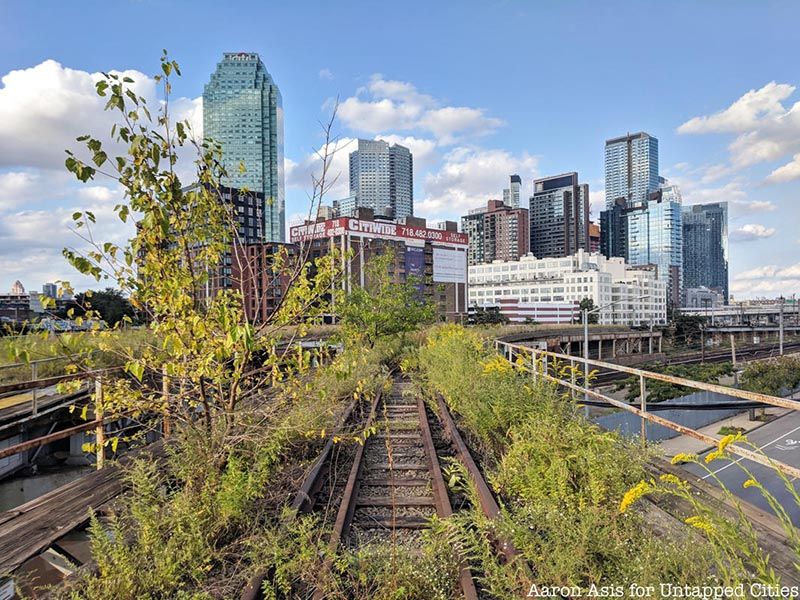
A haven for urban explorers, the Montauk Cutoff was a railroad line built in the 1900s and located in Long Island City. The Montauk Cutoff helped transport trains in and out of Sunnyside Yard and turned locomotives on weekdays, operating frequently until the 1970s when freight traffic in Long Island City declined. Since there was no turntable in Long Island City, trains were gathered and reversed in the evening.
Abandoned completely in the 1990s, the Montauk Cutoff was used by Sextantworks (Wanderlust Projects) for a speakeasy and urban exploration mixed event. In 2011, urban farm collective Smiling Hogshead Ranch formed a guerrilla garden on the abandoned tracks. The Montauk Cutoff was officially decommissioned in 2015, though there have been revitalization plans to transform it into an elevated park.
Next, check out 30 abandoned places in New York City, 10 abandoned places to discover in Manhattan, 9 abandoned places to discover in The Bronx, and 10 abandoned places to discover in Brooklyn!
Subscribe to our newsletter